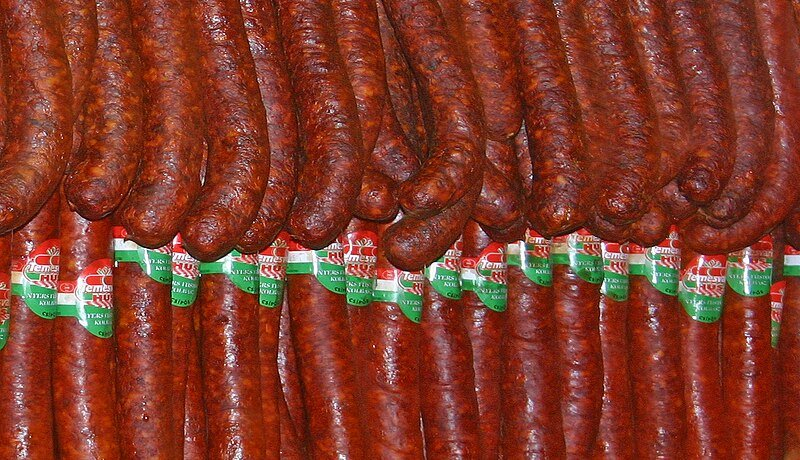Kolbasz

Kolbasz, a savory and flavorful sausage dish, has a rich history of formation and development with roots in Central Europe, particularly Hungary. Its journey from humble beginnings to a beloved culinary tradition is a testament to the region's cultural and culinary evolution.
The origins of kolbasz can be traced back to the Hungarian and Central European traditions of sausage-making, which date back centuries. Early versions of kolbasz were simple, rustic sausages made by Hungarian farmers and butchers, often utilizing the available meats, spices, and preserving methods.
Kolbasz's development took a significant turn during the 18th and 19th centuries when the dish made its way to the bustling streets of Budapest and other Hungarian cities. Street vendors began grilling and serving kolbasz to hungry urban dwellers, marking the emergence of this dish as a street food classic. The 20th century brought further refinement and commercialization of kolbasz production.
Today, kolbasz has achieved international recognition, appreciated for its bold flavors and versatility. It is enjoyed not only in Hungary but also in countries around the world, making it a global ambassador of Central European cuisine. Kolbasz's history of formation and development is a story of how a simple regional dish can evolve into a culinary treasure cherished by food enthusiasts of all backgrounds.












